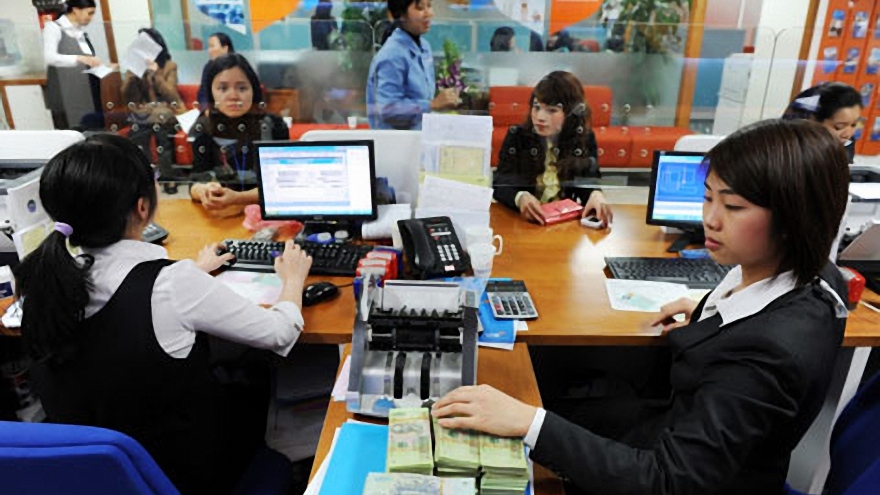State-owned Bank for Investment and Development of Vietnam (BIDV) adjusted its interest rates twice between February 22 and March 2, and the rate on deposits of 13-18 months went up from 6.1% to 6.5%. For 24 to 36 months it went up from 6.3% to 6.8%.
VietABank offers 8.38% on deposits of VND100 million or more for 13 months and above.
By early March even the most conservative banks had joined the race to hike rates.State-owned Vietcombank, which did not join the rush to hike rates last time, has increased interest rates now, but only on short-term deposits unlike the others.Its rates for deposits of one to three months are up by 0.3%-0.5%.
But, significantly, Vietcombank’s rates remain lower than the central bank’s cap of 5.5%.
Another reason is that 80%-90% of deposits now are short-term while demand for long- and medium-term loans is growing rapidly.
The State Bank of Vietnam (SBV)’s Ho Chi Minh City branch reported that last year the ratio between short-term and long- and medium-term loans was 44:56%. It is normally 50:50.
In this scenario, the SBV’s amendments to Circular 36/2014/TT-NHNN reducing the ratio of short-term deposits that can be used for medium- and long-term loans from the current 60% to 40% has caused deposit interest rates to rise.
Besides, the risk weightage for loans to the real estate sector will be raised to 250% from the current 150%.
As a result, banks have been forced to hike interest rates on long-term deposits so that they have enough funds to provide long- and medium-term loans.An SBV spokesman said that in recent months credit demand has shot up, especially before and after the New Year in early February, and the trend is likely to continue.But it should not be too worrying since interest rates remain acceptable at 4.5%-5.4% for deposits of up to six months, and 5.5%-7% for longer terms.
However, the fact shows that the hikes have not benefited either depositors or borrowers.Bao Viet Securities Joint Stock Company said the high interest rates apply only for deposits with long terms and large size (equivalent to billions of dong or more) while the overwhelming proportion of depositors park small amounts for short periods.However, the deposit interest rate hikes are likely to cause an increase in lending interest rates, creating pressure on both corporate and retail borrowers.Thanks to the restructuring of the banking system, lending rates have come down by half since late 2012 to 9%-11% for ordinary loans and 6.5% for priority loans.
But deposit mobilisation has picked up with the interest rate hikes, creating the possibility of a surge in lending interest rates. Interest rates on consumer loans have started to go up, meaning rates on other loans too may soon rise.